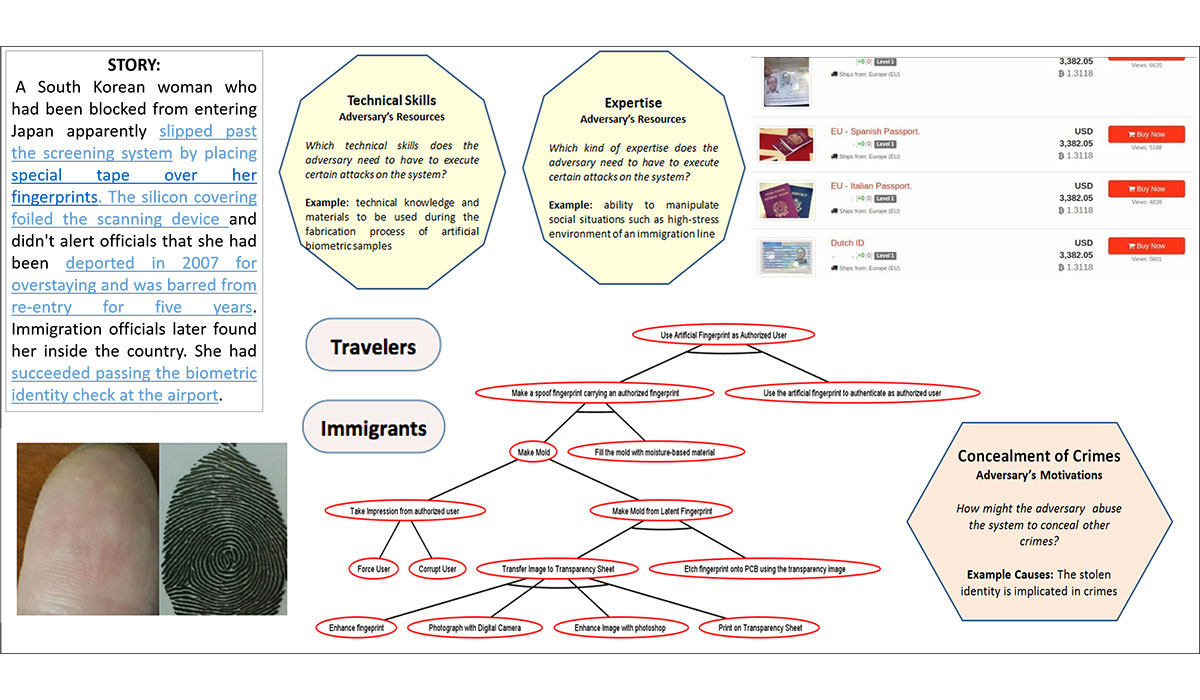This project has concluded. Details on the project are below.
Abstract
Biometric identification constitutes a critically important technology in traveler, immigration and refugee management. This role makes biometrics the prime target for identity theft, spoofing and vulnerability exploitation. The science behind biometric system attack vector analysis is emerging, but not nearly as fast as the general level of security threats. Nevertheless, the threats specific to the systems deployed or considered for deployment by the Department of Homeland Security differ from generic biometric application due to the motivation and consequences of identity misrepresentations. Therefore, this project analyzes the feasibility of presentation attacks behind identity misrepresentation at US borders and creates a classification of attack methods and vectors based on their complexity, cost, feasibility, risks and consequences. The classification will then be cross-compared with the state of the art in biometric system security flow analysis. Observed gaps will create the research agenda leading towards practical vulnerability assessment methods and countermeasures, both managerial and technical. Project results should enable identification of biometric presentation attack risks and severities, leading towards a well-defined defense strategy.
Presentations and Publications
Presentation | 2017 PI Meeting
Poster | 2017 BTI Institute Showcase
Report | Robust and Interoperable Fingerprint Spoof Detection via Convolutional Neural Networks
Report | A Methodology for Prevention of Biometric Presentation Attacks
Report | Attack Trees for Preventing Biometric Systems Against Evolving Presentation Attacks
